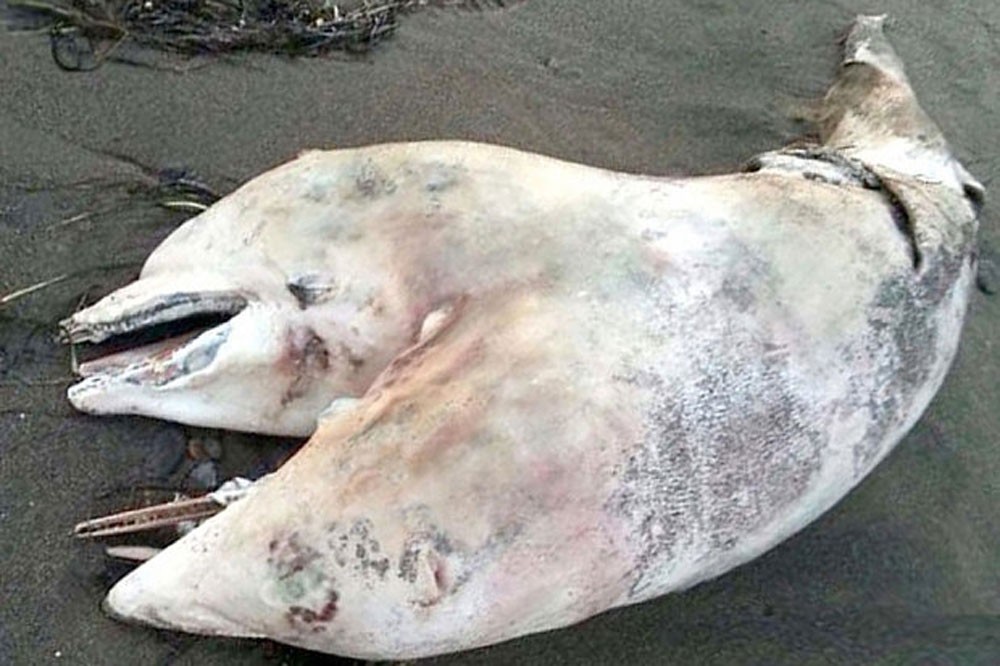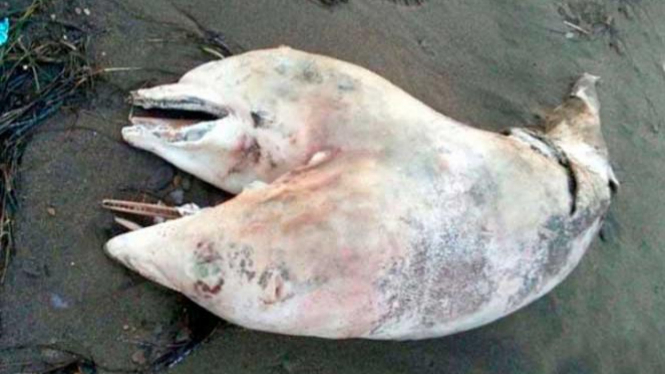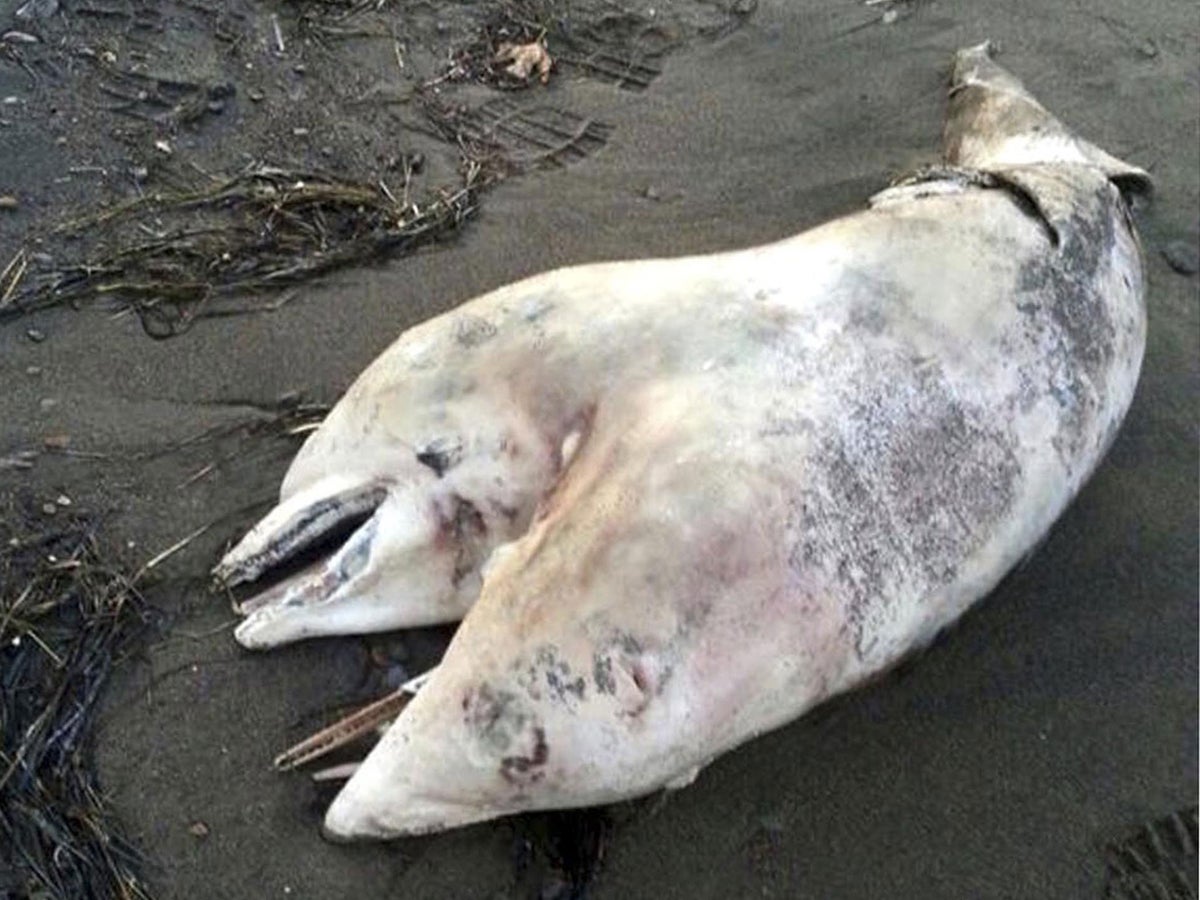In the realm of marine mysteries, a recent discovery off the coast of Turkey has ignited curiosity and amazement among locals and scientists alike. On a seemingly ordinary day, a group of fishermen encountered an extraordinary creature, a two-headed dolphin, which has left many people both baffled and in awe of the wonders of the ocean.
The incident unfolded when a small fishing boat ventured into the waters of the Mediterranean near the Turkish coast. The fishermen were on a routine fishing trip, hoping for a good catch to support their livelihoods. Little did they know that they would stumble upon a creature that could only be described as surreal.
As their nets were cast into the water and slowly drawn back, the fishermen were taken aback by the sight of a unique and puzzling marine specimen. There, caught in their nets, was a two-headed dolphin. The discovery was met with a mix of astonishment and disbelief, as such anomalies in the natural world are exceedingly rare.

The two heads, each with its own set of eyes and a distinct blowhole, left the fishermen and the scientific community alike pondering the origins and implications of this extraordinary find. The dolphin was carefully examined and documented before being released back into the sea, ensuring its safe return to its natural habitat.
Scientists and marine biologists have since taken a keen interest in this unusual discovery. Two-headed animals, known as bicephalic or polycephalic, are exceedingly rare in the animal kingdom. When such anomalies occur, they often result from developmental abnormalities during the embryonic stage. In the case of this two-headed dolphin, it is believed that it was a set of conjoined twins that did not fully separate during development, resulting in this unique occurrence.

Although the two-headed dolphin may seem like a mythical sea monster, it is a testament to the remarkable diversity of life in our oceans. It is a reminder that the seas still hold many mysteries waiting to be uncovered, and that even the most experienced fishermen and marine experts can be surprised by the wonders they encounter.
This discovery has also prompted discussions about the importance of marine conservation and the need to protect and preserve the fragile ecosystems of our oceans. As human activity continues to impact marine life, it is crucial that we take steps to safeguard the natural world and maintain its extraordinary biodiversity.
The two-headed dolphin sighting off the coast of Turkey is an extraordinary reminder of the awe-inspiring complexity of the natural world. It also serves as a call to action for us to continue exploring and preserving our oceans and the life they hold, as they have the power to surprise, delight, and educate us in ways we could never have imagined.

The incident unfolded when a small fishing boat ventured into the waters of the Mediterranean near the Turkish coast. The fishermen were on a routine fishing trip, hoping for a good catch to support their livelihoods. Little did they know that they would stumble upon a creature that could only be described as surreal.
As their nets were cast into the water and slowly drawn back, the fishermen were taken aback by the sight of a unique and puzzling marine specimen. There, caught in their nets, was a two-headed dolphin. The discovery was met with a mix of astonishment and disbelief, as such anomalies in the natural world are exceedingly rare.

The two heads, each with its own set of eyes and a distinct blowhole, left the fishermen and the scientific community alike pondering the origins and implications of this extraordinary find. The dolphin was carefully examined and documented before being released back into the sea, ensuring its safe return to its natural habitat.
Scientists and marine biologists have since taken a keen interest in this unusual discovery. Two-headed animals, known as bicephalic or polycephalic, are exceedingly rare in the animal kingdom. When such anomalies occur, they often result from developmental abnormalities during the embryonic stage. In the case of this two-headed dolphin, it is believed that it was a set of conjoined twins that did not fully separate during development, resulting in this unique occurrence.

Although the two-headed dolphin may seem like a mythical sea monster, it is a testament to the remarkable diversity of life in our oceans. It is a reminder that the seas still hold many mysteries waiting to be uncovered, and that even the most experienced fishermen and marine experts can be surprised by the wonders they encounter.
This discovery has also prompted discussions about the importance of marine conservation and the need to protect and preserve the fragile ecosystems of our oceans. As human activity continues to impact marine life, it is crucial that we take steps to safeguard the natural world and maintain its extraordinary biodiversity.
The two-headed dolphin sighting off the coast of Turkey is an extraordinary reminder of the awe-inspiring complexity of the natural world. It also serves as a call to action for us to continue exploring and preserving our oceans and the life they hold, as they have the power to surprise, delight, and educate us in ways we could never have imagined.